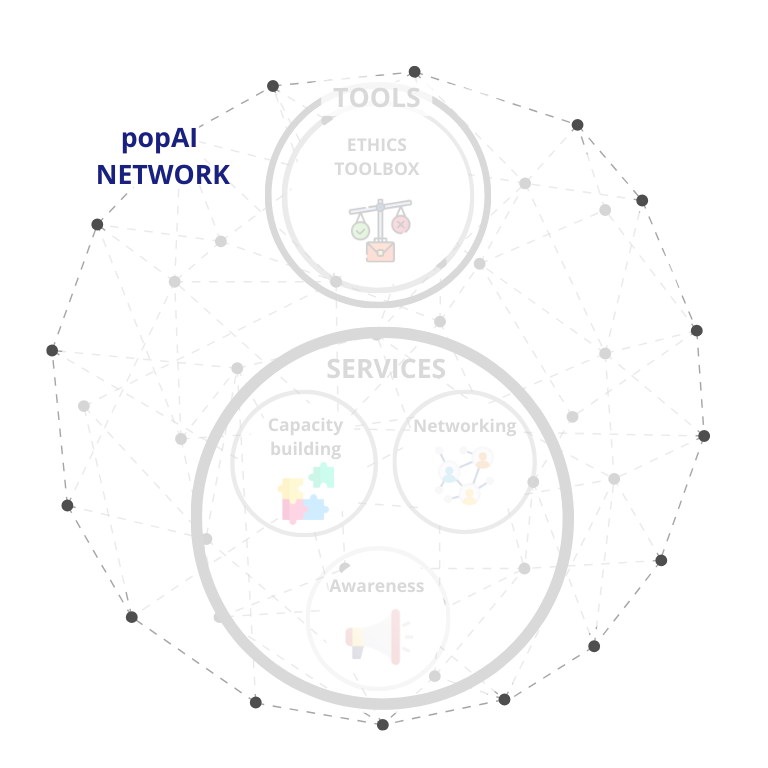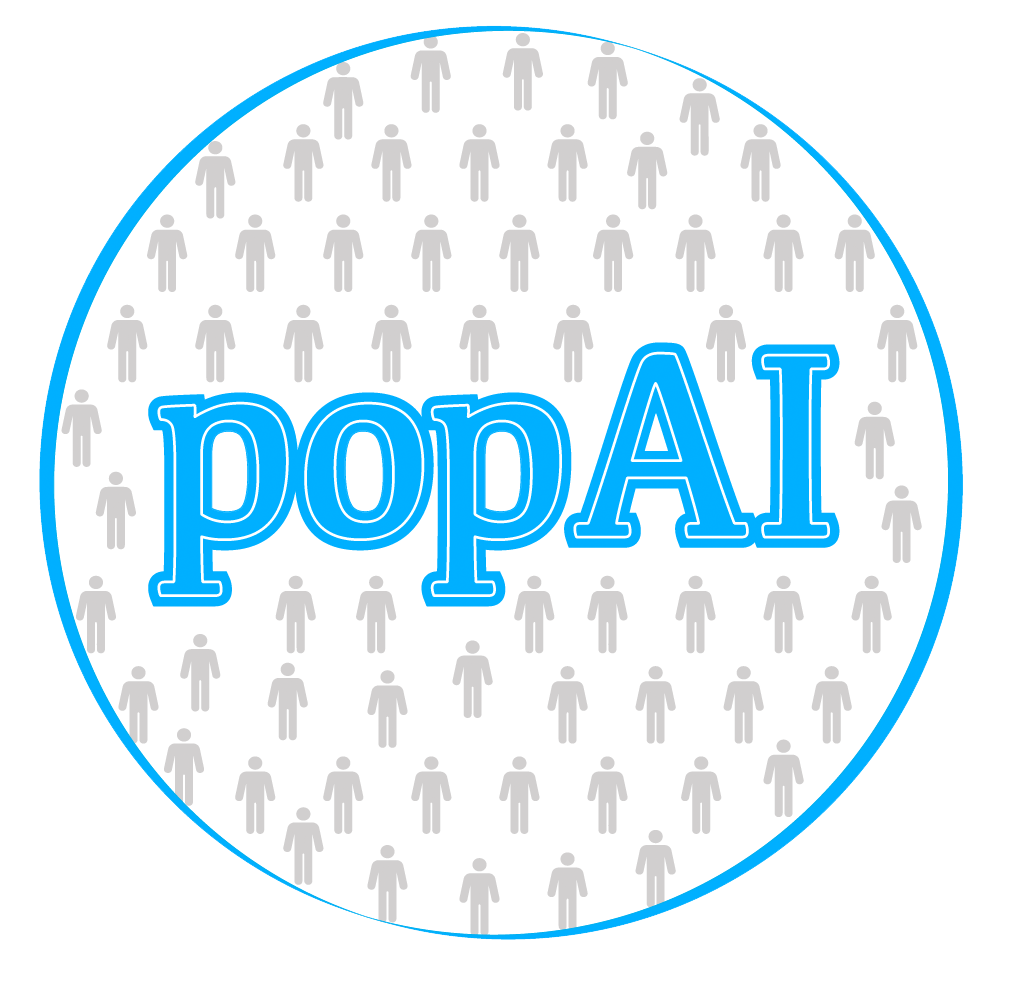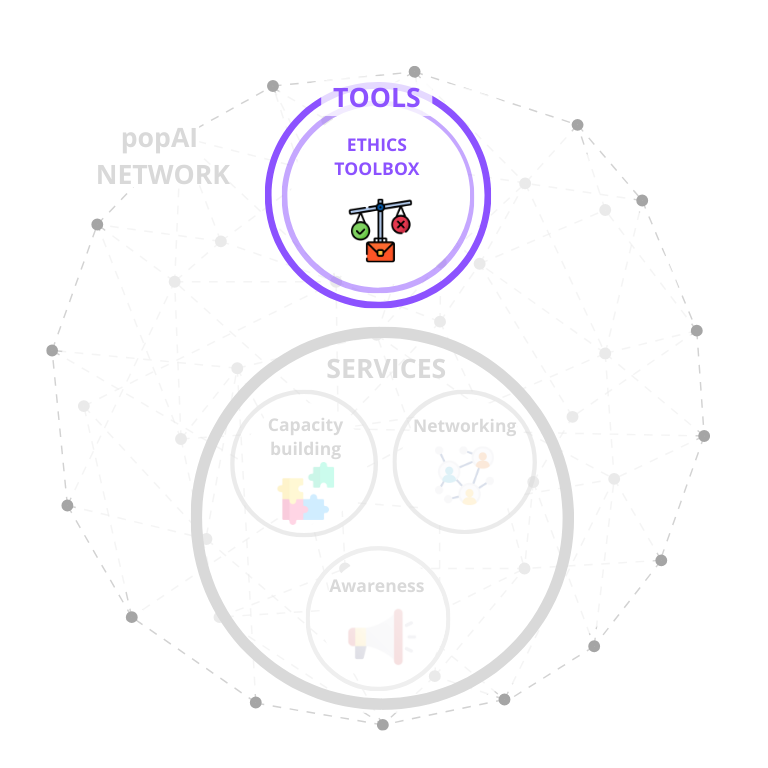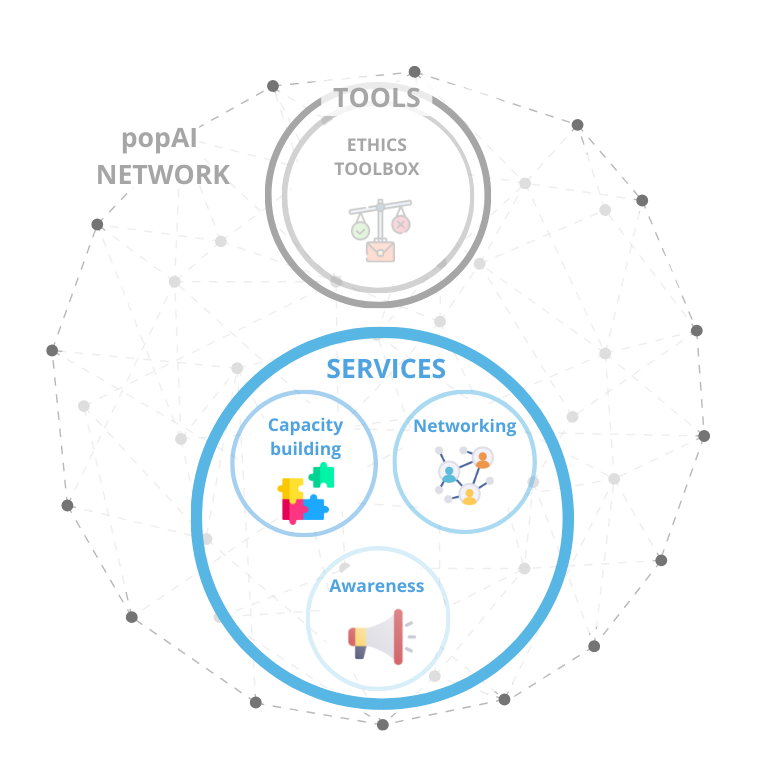European AI Hub
Key structure of the European AI Hub
The popAI European AI hub for LEAs will rely on the work and the activities performed within popAI project while aiming to last also beyond the duration of the project. The hub, indeed, gathers the exploitable results of the project and represents a way to “keep alive” the results of the work and activities performed within the project.
The European AI Hub for LEAs consists of three main pillars: the network, the tools, and the services.
The network allows to facilitate interactions and exchange of perspectives, and it is meant to further stimulate discussions and knowledge sharing.
The network derives from the engagement activities carried out during the 24 months. It gathers popAI consortium members and Stakeholder Advisory Board, sibling and related projects, and the multiple categories of actors involved in the AI domain. It includes multiple categories of actors: LEAs, Civil Society Organisations (CSOs), researchers, academia, industry, ethics and legal experts, etc.
Representatives from these categories have been involved in multiple popAI activities: this has facilitated their interactions and exchange of perspectives, thus contributing to achieve a better understanding of each other’s needs and point of view.

The hub is intended to be a modular system that could be expanded and extended in the future with new services and tools. This would ensure the continuation of the work, while opening up opportunities for establishing new partnerships with other projects.


